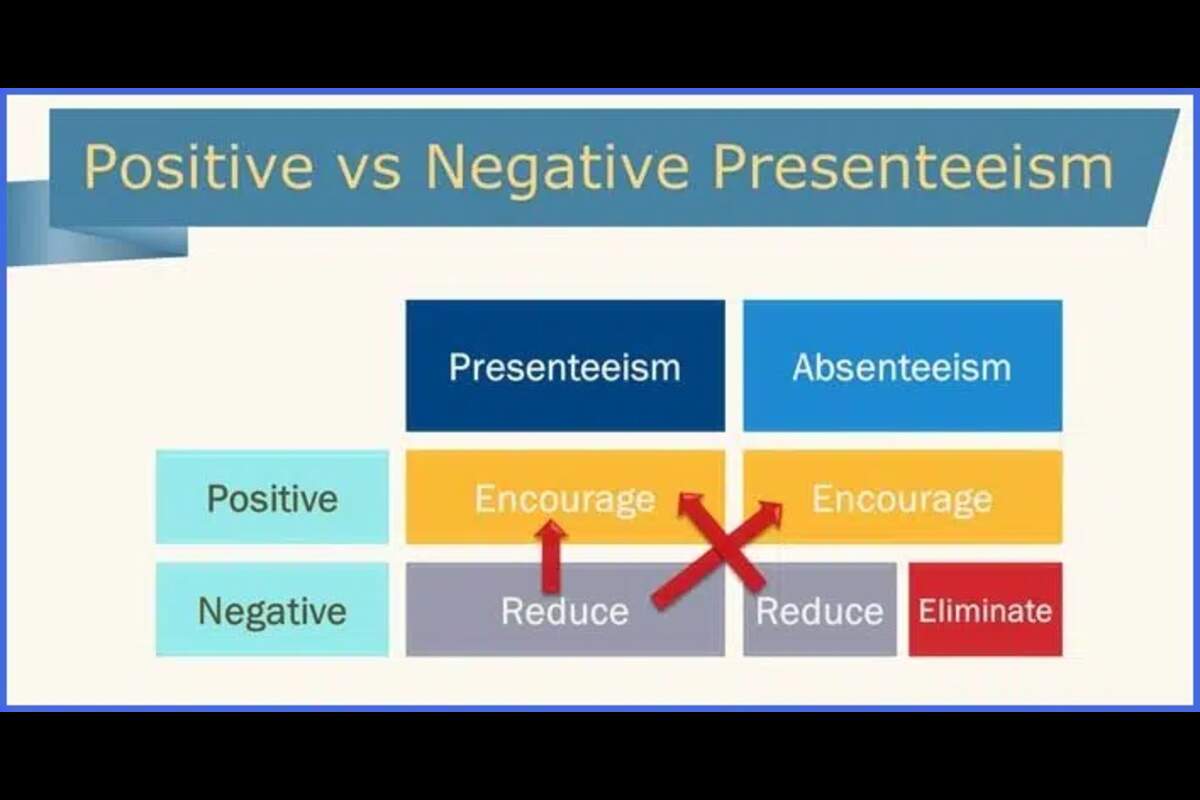Effects of Presenteeism in the Workplace

Effects of Presenteeism in the Workplace: Presenteeism is a relatively new concept that has grown in prominence in recent years. According to presenteeism studies, firms lose billions of dollars each year by having employees show up for work but not be totally productive.
The most difficult difficulty, however, is detecting and measuring presenteeism. Absenteeism, on the other hand, is easy to identify because a vacant seat is immediately tied to a loss of production. But what are the other consequences of workplace presenteeism?
Let’s take a deep dive into presenteeism in the workplace and examine the effects as well as potential difficulties.
What is Presenteeism?
Presenteeism is a condition in which employees go to work but do not perform to their full potential for legitimate reasons. Genuine reasons could include mental health concerns, stress, exhaustion, or minor physical conditions like allergies, arthritis, or migraines. Employees who are unproductive because they are actively avoiding work are not included in this category. Rather, it denotes a lack of productivity as a result of physical or mental health issues.
Presenteeism is especially common in occupations with a lot of stress and significant workloads, such as medical staff. Furthermore, presenteeism is more likely to be a concern in companies with higher employer expectations and demanding work culture. Furthermore, firms that do not promote wellness experience the highest levels of presenteeism.
Another related tendency that has emerged since the epidemic is digital presenteeism, in which employees feel obligated to be available online at all times via video calls, phone, emails, or Slack. Employee burnout and long-term productivity decrease as a result of digital presenteeism among remote workers.
Effects of Presenteeism in the workplace
When a firm fails to handle presenteeism, it can harm the health and well-being of its employees as well as the business. It can have an impact on the baseline and perhaps harm the company’s long-term reputation.
Furthermore, presenteeism can make other employees sick by spreading germs and viruses, and it can generate stress for both the person in question and their coworkers when their performance suffers.
Presenteeism can lead to long-term productivity losses since unwell personnel are more likely to make mistakes due to a lack of focus on the job.
Furthermore, presenteeism harms the company’s reputation by portraying the company as demanding and unsupportive.
Presenteeism and Mental Health
As physical health disorders contribute to employee productivity, mental health conditions also have a strong association between presenteeism and employee productivity. Simply said, the mental health of the employees can be a clear indicator of presenteeism.
As a result, many organizations have begun to see the value of investing in wellness initiatives and enhancing work-life balance. Furthermore, businesses are realizing that it is their obligation to promote employee mental health, not just for the sake of good health, but also because it has a direct impact on employee performance and productivity.
Strategies to Tackle Presenteeism in the Workplace
Presenteeism in the workplace can be decreased by following three simple steps:
- Determining how widespread the problem is.
- Metrics to be used to calculate productivity levels.
- Putting in place steps to address fundamental issues that influence personnel.
Aside from these approaches, you can train your supervisors to spot and address indicators of presenteeism before it becomes a destructive pattern. Furthermore, encouraging employee empowerment can assist in guiding people to develop skills, increase performance, and achieve their goals.
However, the greatest strategy to combat presenteeism is to foster an open and honest work environment in which employees feel comfortable asking management for help when they are experiencing challenges that are affecting their productivity.
Conclusion
Reducing presenteeism will maintain productivity levels high in the workplace, thus it is critical to put measures in place to guarantee it does not become a problem in the firm.
Also Read: How to be present : Live Mindfully